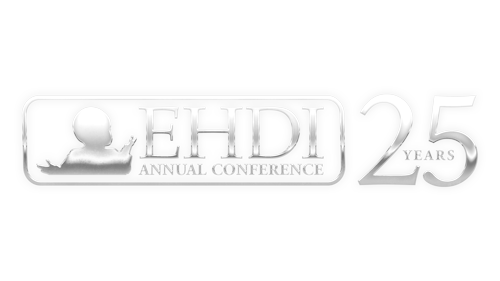2026 Early Hearing Detection & Intervention Conference
March 15-17, 2026 • Jacksonville, FL
3/10/2025 | 10:05 AM - 10:35 AM | EHDI Benchmarks and Additional Factors Impacting Language Outcomes in Young Children with Bilateral and Unilateral Hearing Differences | 317/318
EHDI Benchmarks and Additional Factors Impacting Language Outcomes in Young Children with Bilateral and Unilateral Hearing Differences
Identifying factors associated with increased risk for language delay is a first step toward informing intervention practices that may improve children’s language outcomes. In this presentation, we will explore factors associated with language outcomes in children who are deaf or hard of hearing aged 8 to 36 months. The sample includes 474 children with bilateral hearing differences and 270 children with unilateral hearing differences enrolled in one of 15 early intervention programs across the U.S. participating in the 2020-2024 CDC-supported Outcomes and Developmental Data Assistance Center for EHDI Programs (ODDACE) project.
Language outcomes were measured using the Developmental Assessment for Young Children (DAYC-2) and the MacArthur-Bates Communicative Development Inventories. For children with bilateral hearing differences, a variety of factors were statistically associated with language outcomes (p < .05) including sociodemographic factors such as race, ethnicity, eligibility for the WIC program, and caregiver education levels as well as audiologic factors, including the child's hearing levels and whether they met the EHDI 3 and 6 guidelines. For children with unilateral hearing differences, both WIC eligibility and caregiver education levels were statistically associated with language outcome scores (p < .05). A detailed examination of the impact of varying ages of identification and intervention on language outcomes will be described based on a subset of the sample whose hearing differences were identified by age 12 months. Additionally, given the Joint Committee on Infant Hearing’s recommendation (2019 position statement) for states meeting 1-3-6 to strive to meet 1-2-3, the potential impact of meeting this more ambitious target on language outcomes will be addressed.
- Identify risk factors for language delays and factors associated with more successful language outcomes for children with bilateral hearing differences
- Identify risk factors for language delays and factors associated with more successful language outcomes for children with unilateral hearing differences
- Describe the associations between age of identification and intervention, including meeting EHDI 2 and 3 guidelines compared to the EHDI 3 and 6 guidelines, on language outcomes
Presentation:
3545975_18187AllisonSedey.pdf
Handouts:
Handout is not Available
Transcripts:
CART transcripts are NOT YET available, but will be posted shortly after the conference
Presenters/Authors
Allison Sedey
(Primary Presenter,Author), University of Colorado-Boulder, Allison.Sedey@colorado.edu;
Allison Sedey is a speech pathologist, audiologist, and researcher. She is currently the director of the Early Language Outcomes Lab (ELO) at the University of Colorado-Boulder and is the assessment and accountability coordinator for the early intervention outreach program at the Colorado School for the Deaf and the Blind. Dr. Sedey received her Ph.D. from the University of Wisconsin-Madison where she studied language acquisition in children who are deaf/hard of hearing as well as in children who have Down syndrome. For the past 30 years, she has served as the director or project coordinator on a variety of grant-funded research projects examining predictors of language outcomes in young children who are deaf or hard of hearing.
ASHA DISCLOSURE:
Financial -
• Receives Grants for Independent contractor from Centers for Disease Control and Prevention (CDC).
Nonfinancial -
No relevant nonfinancial relationship exists.
AAA DISCLOSURE:
Financial -
Financial relationship with University of Colorado-Boulder
Colorado School for the Deaf and the Blinda.
Nature: Salary received from a Cooperative Agreement with the CDC at the time of this project.
Nonfinancial -
No relevant nonfinancial relationship exists.
Beth Langer
(Co-Author), University of Colorado-Boulder, Beth.Langer@colorado.edu;
Beth Langer has enjoyed a career that has interwoven work as a clinical Speech-Language Pathologist (SLP) with work as a researcher and instructor. She completed her MA at the University of Iowa and her Ph.D. at the University of Colorado at Boulder. As an SLP, she has worked with Deaf, hard-of-hearing, and typically hearing students in clinical and school settings. She supervised graduate clinicians in the Speech and Hearing Clinic at Northwestern University and has worked in school districts as a consultant, diagnostician, parent educator, and supervisor for SLP Assistants. Currently she works at the Early Language Outcomes (ELO) lab at CU-Boulder and teaches for Metropolitan State University of Denver and the Speech-Language Pathology Prerequisites Program at CU-Boulder.
ASHA DISCLOSURE:
Financial -
Nonfinancial -
AAA DISCLOSURE:
Financial -
Nonfinancial -
